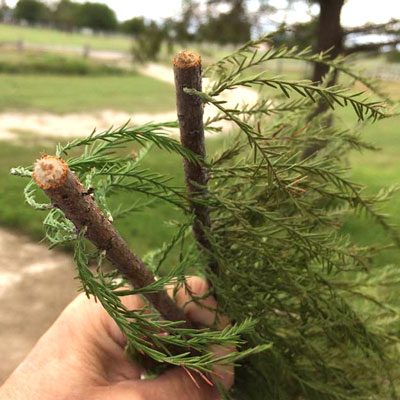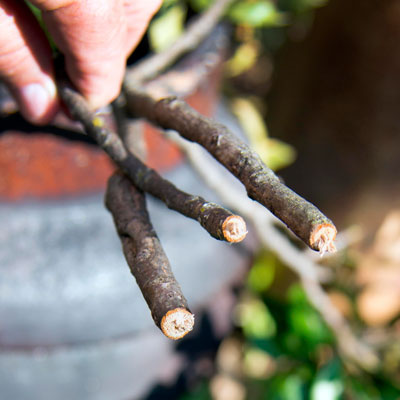Question of the Week Number 1: October 4, 2018

These small twigs that have been visited by twig girdler beetles over the summer fell recently. My Facebook friend Bob M. posted the photo. He knew the cause, but was concerned about potential damage to his bald cypress tree. I’ll use his photo as my example. I admitted to him that bald cypress is not one of their preferred trees.
What I usually hear on my radio program…
“Neil, what has nipped the little branches off my trees recently? They look like they’ve been cut with a knife.”
This is the work of twig girdler beetles. They’re actually rather ingenious in how they carry on their life cycles, and lest you worry, they do almost no permanent harm to the plants.
The adult female beetle deposits eggs toward the ends of the twigs. She then moves back toward the trunk a few inches and scores the twig or small branch with her sharp mouthparts by cutting around and around in circles.
After a few weeks or months the twigs die and eventually fall to the ground. The eggs hatch, and the larvae develop within, and feed upon, the dead twigs.
Finally the adult beetles emerge, fly, mate and begin the process over again the next year.
Because the female is present on the host tree for only a short period of time, you would have to be spraying at the time she is actually there to have any hope of killing her. And because she doesn’t feed on the tree, insecticides you apply and leave behind would have no effect on her.

Twigs cut from the Sperry pecan trees fell following the heavy rains a couple of weeks ago. It’s pretty much an ongoing event at our house.
Your only means of reducing the population would be to pick up the fallen twigs and destroy them or send them off to the landfill. However, there will be many more that will fly in from neighboring trees so you’ll never really get rid of them.
So the shorter answer is: You can’t do much to control them, and they don’t do much to harm your trees anyway. You are freed to worry about something else.
Here is a good piece of information from the University of Missouri in case you’d like to see what a professional entomologist has to say.
